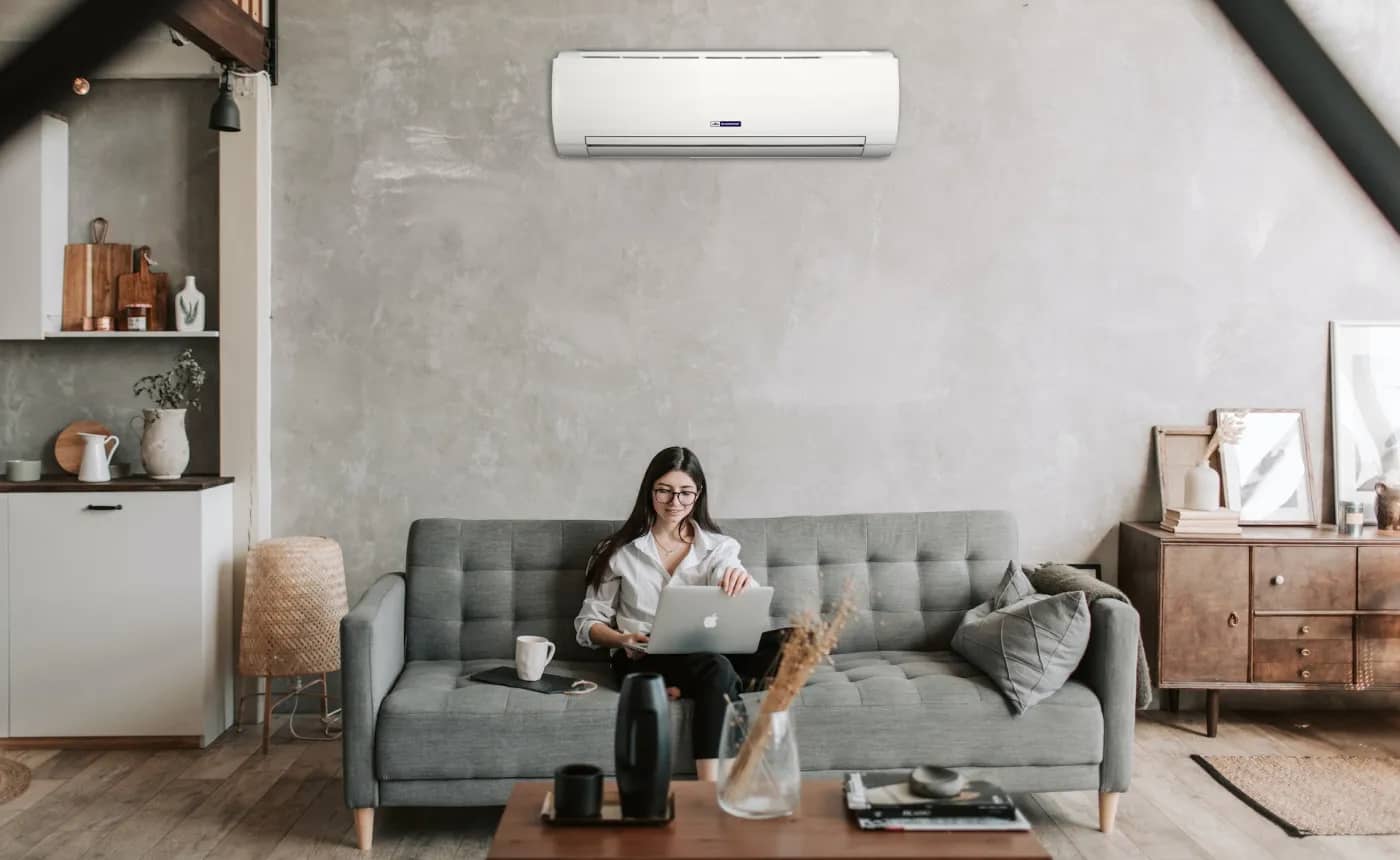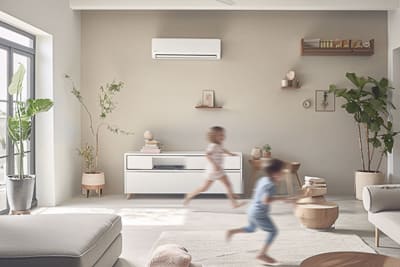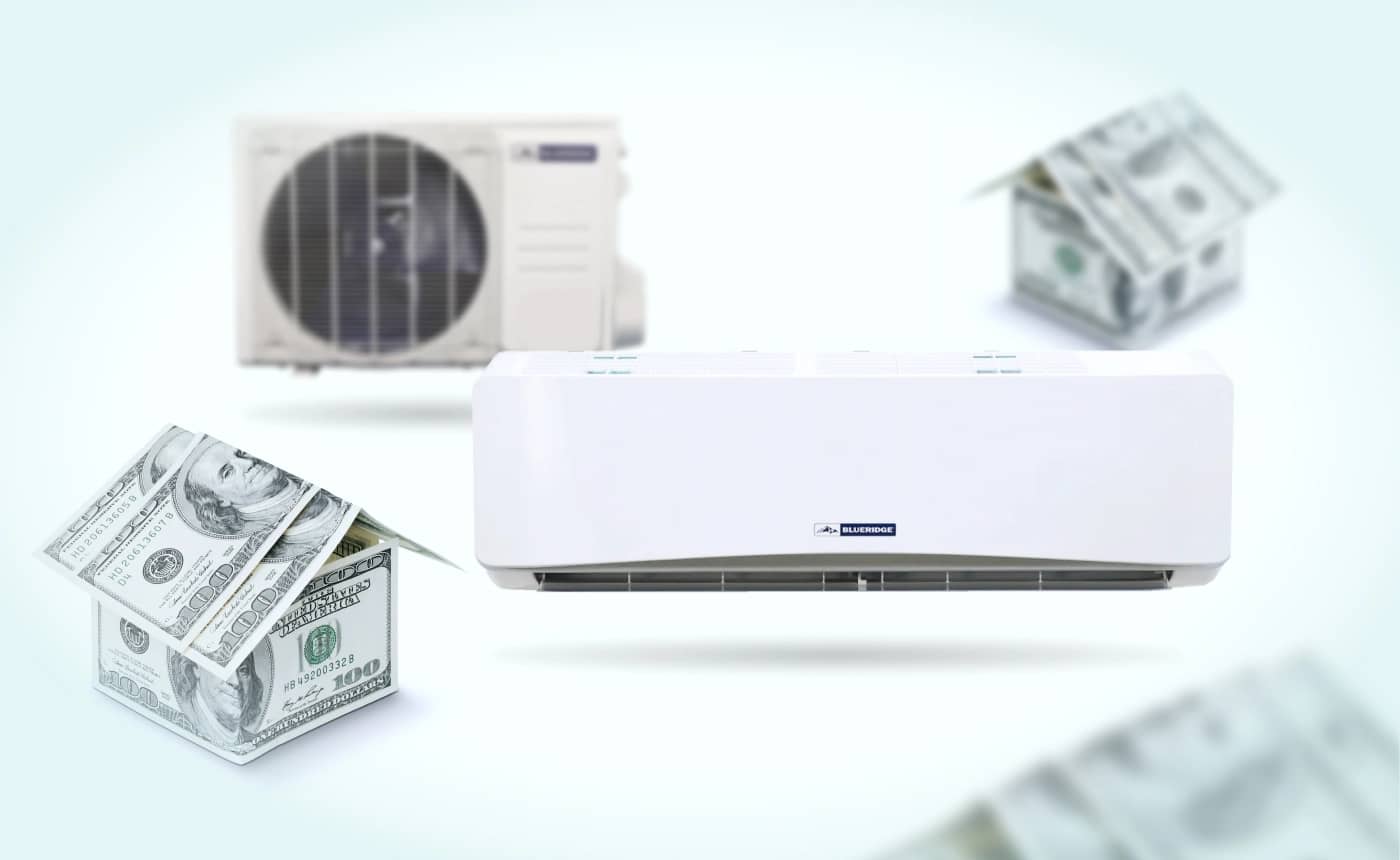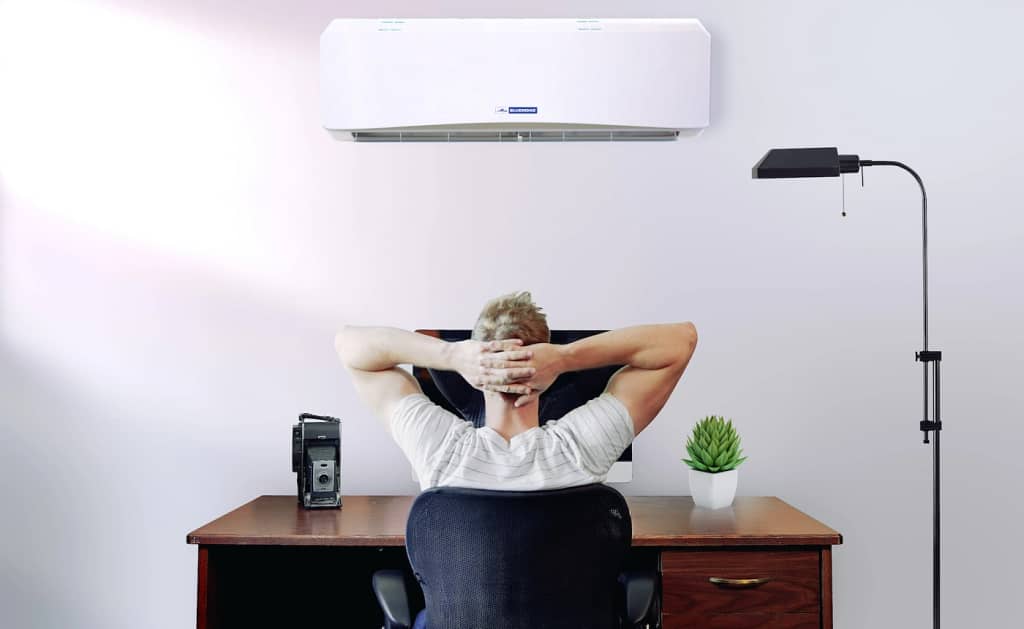
For anyone who is thinking about a ductless mini split system for their home or business, there are plenty of positive reasons to install one of these innovative heating and cooling systems into your space. But…there are also some reasons you may want to think twice before you do so. To help you make an informed decision, here are some mini-split pros and cons that you should consider.
KEY TAKEAWAYS
- Ductless mini split systems can significantly reduce energy consumption and utility costs while providing tailored climate control for each area of your home or office.
- While ductless mini splits provide numerous advantages, there are trade-offs to be aware of as well.
- The decision to install a ductless mini split system should be based on factors such as your budget, space layout, climate conditions, and your tolerance for potential drawbacks.
As more Americans are becoming conscious of energy efficiency, cost savings, and the joy of customizing comfort, ductless mini splits have emerged as a promising solution to traditional heating and cooling methods.
Still, it will be important to weigh and contemplate all the mini split pros and cons that come with installing a ductless mini split before you can make the final decision as to whether or not one of these systems is going to work well for you.
The Top 5 Advantages of a Ductless Mini Split System
Ductless mini split systems offer several compelling advantages over traditional HVAC systems. These benefits contribute to enhanced energy efficiency, comfort, and convenience in both residential and commercial spaces:

1. Energy Efficiency and Cost Savings
Ductless mini splits are designed with energy efficiency in mind.
Unlike traditional central HVAC systems that can experience significant energy losses through ductwork, mini-splits are ductless, minimizing such losses.
Inverter technology further enhances this efficiency, which allows mini-splits to adjust their output according to specific cooling or heating demands. As a result, these modern systems maintain a consistently comfortable indoor environment without the energy wastage associated with frequent starts and stops.
Additionally, ductless mini-splits often have high Seasonal Energy Efficiency Ratio (SEER) ratings. SEER measures an HVAC system’s cooling efficiency over a season. Higher SEER ratings indicate better energy efficiency. Mini-split systems boast impressive SEER values, making them cost-effective choices for homeowners looking to reduce their energy bills.

2. Zoning and Individualized Comfort
One of the standout features of ductless mini splits is the ability to create individual temperature zones within a space.
Each indoor air-handling unit can be controlled independently and remotely, allowing for precise zoning of different areas within your home or workspace. This means you can cool or heat only the rooms that are in use, avoiding unnecessary energy consumption in unoccupied areas.
Zoning capabilities also cater to individual preferences. If someone in your household prefers a cooler temperature while another prefers it warmer, mini-splits can accommodate both needs simultaneously. This personalized temperature control enhances comfort and saves energy by preventing over-conditioning spaces.

3. Easy Installation
Installing a ductless mini split system is considerably easier and less invasive than installing traditional ducted systems.
Ductwork installation can be complex, time-consuming, and costly.
The absence of ductwork significantly reduces installation complexity and the associated costs.
Ductwork installation can be disruptive and time-consuming, especially in existing buildings. In contrast, mini-splits require only a small hole in the wall to connect the indoor and outdoor units, minimizing structural alterations and installation time.
The reduced installation complexity makes mini-splits an attractive option for retrofitting or adding climate control to specific areas, such as room additions or converted spaces like garages or attics.
For those who prefer professional installation, mini-split systems offer a more streamlined process, often requiring fewer labor hours than traditional HVAC systems. This can translate into cost savings, making mini-splits a practical choice for various applications.

4. Flexibility and Space-Saving Design
Ductless mini splits offer design flexibility that traditional systems cannot match.
The compact indoor units can be wall mounted, ceilings, or floors, allowing for optimal placement in various areas.
This is particularly advantageous for small spaces, rooms with limited wall space, or locations where ductwork installation is impractical. The versatility of placement ensures that you can achieve efficient heating and cooling without compromising aesthetics or functionality.

5. Improved Indoor Air Quality
Many ductless mini split systems come equipped with advanced air filtration and purification features.
These features help remove dust, allergens, and pollutants from the air, resulting in improved indoor air quality.
The absence of ducts that can accumulate contaminants further contributes to healthier air for occupants. Cleaner indoor air can lead to reduced allergy symptoms, respiratory issues, and a generally more comfortable and productive environment.
By considering these advantages, it becomes evident that ductless mini split systems offer a modern and efficient solution for both residential and commercial heating and cooling needs.
The combination of energy savings, personalized comfort, easy installation, design flexibility, and improved air quality makes ductless systems an attractive choice for those seeking a superior HVAC solution.

The Potential Cons of Installing a Ductless Mini Split System
While ductless mini split systems offer numerous advantages, it’s important to consider some potential drawbacks that could impact your decision.
Though many of these “cons” are not significant (or have a payoff that will ultimately offset them) you’ll still want to be aware of any potential issues or challenges they may cause before you fully commit to purchasing one of these types of cooling systems.

1. Initial Cost
One of the primary concerns for many individuals considering the purchase of a ductless mini split system is the initial investment that’s required when first purchasing and then installing one of these mini split systems.
While mini split cooling systems can provide long-term savings through energy efficiency savings and reduced utility bills, the upfront cost can be higher compared to traditional HVAC systems.
One thing to remember is that many ductless air conditioning systems may qualify for tax credits or rebates, depending on where you live.
These types of programs can make a big difference and help offset the initial cost of your ductless mini split air conditioner.
Just make sure to remember that – even though ductless mini split air conditioning systems may be more expensive upfront – you will also want to think about the long-term benefits and potential savings over time.

2. Aesthetics
One of the biggest complaints many people have about installing a ductless air conditioning system into their homes is that they find the indoor units to be unattractive (and are even considered an eyesore by some!)
And while every indoor air handling unit is designed to be unobtrusive and modern, some homeowners may find them less appealing from an aesthetic perspective than traditional HVAC systems that are practically nonexistent.
Here’s why:
- Indoor Unit Visibility: In some installations, the indoor units are visible on the walls or ceilings of rooms. Their presence can disrupt the aesthetics of a well-designed interior, especially in spaces where a sleek, minimalist look is desired.
- Bulkier Indoor Units: While mini splits are generally compact, certain models may have larger indoor units, which could be considered less aesthetically pleasing, especially if they cannot be discreetly integrated into the room’s design.
- Refrigerant Lines and Wires: The refrigerant lines and electrical wiring connecting the indoor and outdoor units may be visible in some installations, which can detract from the overall appearance of the space.
- Color and Design: Mini splits typically come in neutral colors like white, which may not blend seamlessly with all interior color schemes or design aesthetics. This lack of customization options can be a drawback for some homeowners.
- Preference for Central Air: Some individuals simply prefer the look of traditional central air systems, which are often hidden from view and have a more familiar and conventional appearance.
It’s worth noting that manufacturers are continually working to improve the aesthetics of mini split systems by offering different styles and designs for indoor units, as well as more discreet installation options.
Additionally, for those who prioritize aesthetics, consulting with or hiring a professional installer may help plan th

3. Maintenance and Repairs
While maintenance for ductless mini split systems is generally straightforward, it still requires some attention.
Regular cleaning or replacement of air filters is necessary to maintain optimal performance and indoor air quality.
While users can typically handle filter cleaning, they may decide that other maintenance tasks — such as checking refrigerant levels and ensuring proper airflow – may require professional assistance.
Not only that but, like any mechanical system, there’s always a chance of malfunctions or breakdowns over time, necessitating professional repairs.
Are maintenance and repair issues unique to ductless systems? Absolutely not. But it’s worth noting that – just like with a traditional HVAC system – there will be some maintenance and possible repair needs involved.
Homeowners should be aware of the importance of regular upkeep and understand their responsibilities in this regard:
- Efficiency and Longevity: Routine maintenance is the key to keeping a mini split system operating at its peak efficiency. It involves tasks such as cleaning or replacing filters, inspecting and tightening electrical connections, and ensuring that the indoor and outdoor units are free from debris and obstructions.
Neglecting maintenance can result in decreased efficiency, higher energy bills, and a shortened system lifespan. - Basic Maintenance Tasks: Homeowners can contribute to the longevity and efficiency of their mini split systems by performing basic maintenance tasks.
These include regularly cleaning or replacing air filters, clearing away any debris or vegetation around the outdoor unit, and checking for visible damage or loose connections. These simple steps help prevent common issues and ensure the system operates smoothly. - Professional Servicing: While basic maintenance tasks can be handled by homeowners, it’s advisable to consider scheduling professional servicing at least once a year.
Trained technicians can perform more in-depth maintenance, such as cleaning the evaporator and condenser coils, checking refrigerant levels, and ensuring the entire system is functioning optimally. This professional servicing not only extends the system’s lifespan but also addresses potential issues before they become costly repairs.

4. Noise Levels
Ductless mini split systems have evolved to be quieter than their predecessors, but noise levels can still vary based on the model and installation.
While most modern units operate at relatively low decibel levels, some noise may still be noticeable, particularly when the unit is working at higher capacities.
It’s essential to select a unit that aligns with your noise tolerance preferences and consider placement options that minimize potential disturbances.

5. Cooling and Heating Limitations
In regions with extreme climate conditions, ductless mini split systems might face limitations in providing sufficient heating or cooling.
Extremely cold climates can reduce the efficiency of the heating capabilities for mini split heat pumps.
Extremely hot conditions can impact cooling efficiency.
In such cases, additional heating or cooling solutions may be required to supplement the ductless system’s performance during extreme weather conditions.

6. The Drainage System
The drainage system for mini splits has also been known to be a frustrating concern at times.
Like all heating and cooling systems, mini splits produce condensation as they cool the hot summer air in your home. This condensation accumulates in the indoor unit and travels through a pipe to the outside of your home.
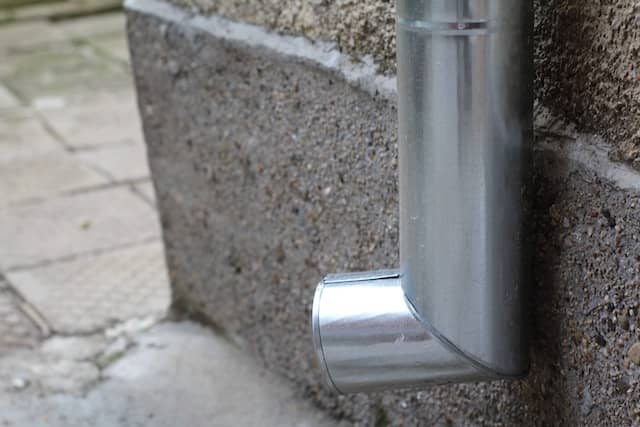
Finding a good endpoint for the condensation is where things get tricky. Unless you want to construct an extensive piping system, the condensation typically ends up next to the outdoor unit, which means it can end up pooling outside your home, near your foundation. You’ll want to think carefully about where you want the condensation from your indoor air handling unit to end up.
Another area where water build-up has been known to be problematic is inside the indoor unit. Depending on how the drainage system gets set up and how the mini split gets installed, there’s a chance for an indoor pipe to clog or kink.
A clogged or kink drainage pipe means that condensation will gather inside the indoor unit and eventually overflow since it’s unable to travel to the outside.
Again, many of these issues can be avoided or quickly rectified with a good installation process and help from a reputable HVAC expert.

7. Installation Challenges
The installation of HVAC mini split systems can be both a selling point and a concern for homeowners.
On one hand, these systems are often praised for their relative ease of installation compared to traditional ducted systems. However, several factors can still pose challenges and emphasize the importance of proper installation.
Ease of Installation: Mini split systems are typically easier to install than ducted systems because they don’t require extensive ductwork. This can save on installation time and costs. Additionally, the ability to place the indoor units strategically can provide flexibility.
Installation Concerns: Despite their simplicity, mini splits must be installed correctly to ensure optimal performance. Issues such as improper placement of indoor units, refrigerant line installation, or electrical connections can lead to inefficiencies, cooling or heating imbalances, or even system malfunctions.
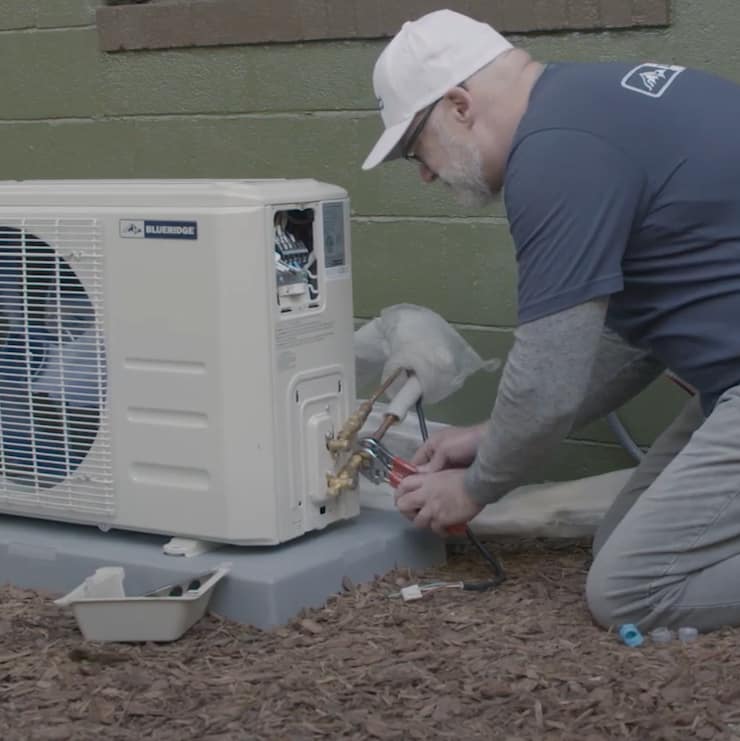
Proper Installation Significance: Proper installation is crucial for achieving the energy efficiency and comfort mini split systems promise. A well-placed indoor unit maximizes airflow and temperature distribution, ensuring that each zone is adequately heated or cooled. Careful attention to refrigerant line insulation and electrical connections also prevents leaks, reduces energy loss, and maintains indoor air quality.
By weighing these potential drawbacks against the benefits of a ductless mini split system, you can make an informed decision that aligns with your specific needs, preferences, and circumstances.
Remember, it’s important to carefully consider both the advantages and disadvantages of purchasing any sort of air conditioning system and you need to take your time and find the right experts to help you determine whether a ductless mini split system is the right choice for your unique needs.
A Quick Q&A to Address Your Mini Split Concerns
If you still have some concerns as to whether or not a mini split is going to be the right system for your heating and cooling needs, here are some of the most common questions that are most often asked by potential customers who are thinking about investing in a mini split system.
Concern: Mini splits are unattractive and disrupt room aesthetics.

Can I make mini splits blend into my room’s decor?

Yes, many mini split units offer sleek and customizable designs. Wall mounted units can be painted, concealed, or fitted with decorative covers to match your room’s aesthetics.
Concern: Mini splits are noisy and disruptive.

Are mini splits noisy?

Modern mini splits are designed for quiet operation. Noise levels are typically lower than traditional HVAC systems, and some units have specialized features for silent operation.
Concern: Installation is complicated and costly.

Is mini split installation complicated?

While installation should be done by a professional, it’s relatively straightforward and cost-effective compared to installing ductwork for central air systems.
Concern: Mini splits are not suitable for extreme climates.

Can mini splits handle very hot or cold climates?

Yes, many mini splits are designed to operate efficiently in extreme temperatures. Some models can provide heating even in sub-zero conditions.
Concern: Mini splits don’t offer consistent heating or cooling.

Will mini splits maintain consistent temperatures throughout my home?

Mini splits excel at zoned heating and cooling, allowing you to set different temperatures in different zones for consistent comfort.
Concern: Mini splits are expensive to run.

Are mini splits energy-efficient?

Yes, mini splits are highly energy-efficient, with some models boasting impressive SEER ratings, resulting in lower energy bills.
Concern: Mini splits are not as effective as traditional HVAC systems.

Can mini splits effectively heat and cool my entire home?

Mini splits are highly effective, and you can install multiple indoor units for whole-home comfort.
Concern: Maintenance is difficult and costly.

Is mini split maintenance complicated and expensive?

Basic maintenance tasks are simple and can be performed by homeowners. Professional servicing is recommended annually but is not overly costly.
Concern: Mini splits require significant upfront costs.

Are mini splits cost-effective in the long run despite the initial investment?

Yes, mini splits offer long-term savings on energy bills and can last for many years, making them a smart investment.
Concern: Mini splits may not be right for my space.

Are mini splits suitable for all types of homes and spaces?

Mini splits come in various sizes and configurations, making them suitable for apartments, single rooms, large homes, and commercial spaces alike. There’s a mini split system to fit nearly any application.
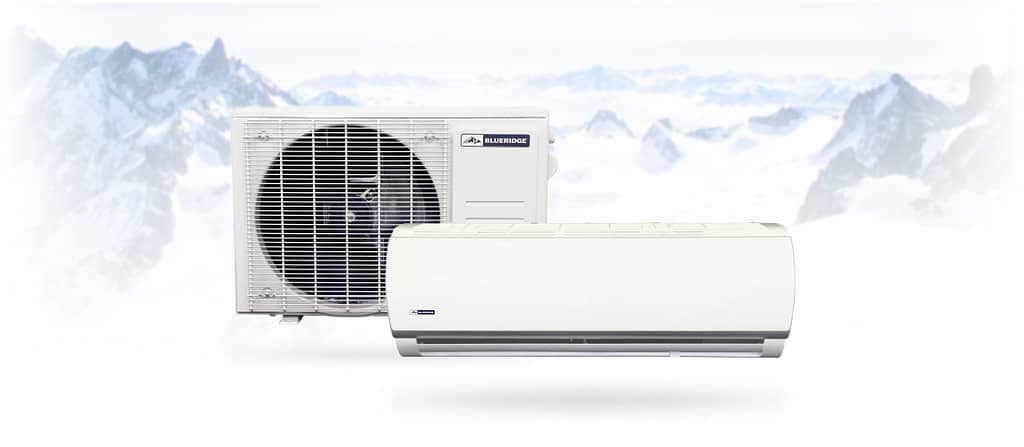
When You’re Thinking Mini Split System…Think Alpine!
Like any air conditioning system, a ductless mini split system is going to have its advantages and disadvantages.
As a home or business owner, you must decide which one to go for based on your requirements and budget.
At Alpine Air, our experienced team can help you determine if a ductless mini-split AC system is the right choice for your home or office and offer guidance on your entire system selection.
Contact us today to get started!

